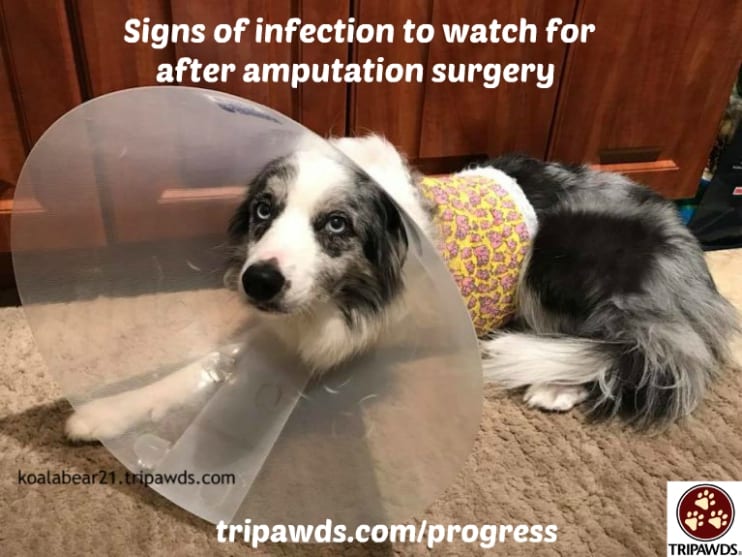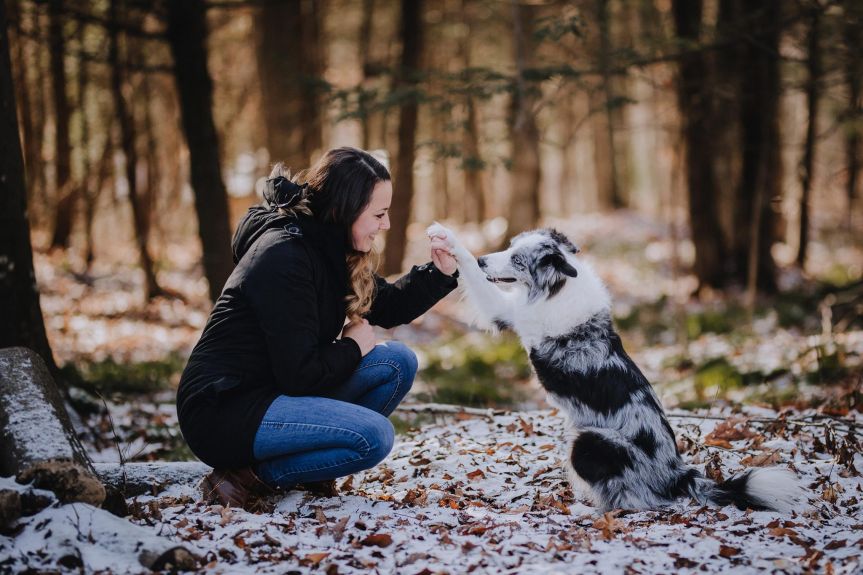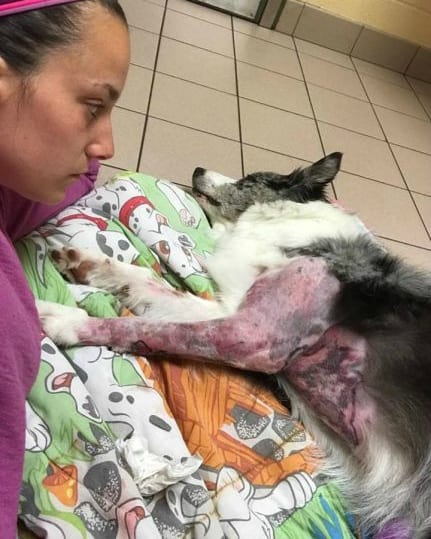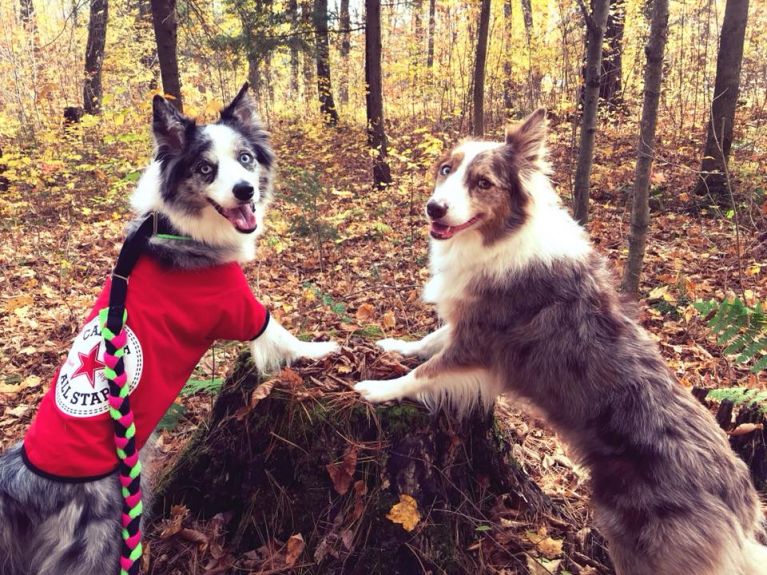Tripawd amputation incision infections don’t happen often. But when they do, an infected wound can put your pet’s life in danger. Today you’ll learn a few infection signs to watch out for, thanks to Kala, who inspired us to share her own infection ordeal.

First, let’s start with how you can make sure your Tripawd’s new incision stays infection-free.
How to Avoid a Tripawd Amputation Incision Infection
An amputation incision infection can happen under the best of circumstances, so it’s up to you to closely monitor the fresh wound.
Your Tripawd may or may not be wearing a pressure-wrap bandage after surgery. Some surgeons use them, some don’t. There’s no right or wrong choice. But the absence of a bandage makes it easier to monitor the incision, so talk with your vet about whether or not your Tripawd needs one.
When your dog or cat returns home, watch for signs of amputation incision infection that include:
- Stinky, green or cloudy discharge.
- Excessive seroma fluid (more than 1 drip of fluid per second).
- Loose or missing sutures or staples or a large gap in the incision (more than 1/4 inch) can mean infection is setting in.
- A sudden lump on or around the incision area
If your Tripawd is wearing a bandage, you can still monitor for infection. Look for fluid drainage and check to make sure the area isn’t warm to the touch, or extremely swollen.
If any of these signs of amputation incision infection occur, call your vet immediately.
Kala Overcomes Multiple Post-Op Infections

We’ve seen a few bad Tripawd amputation incision infections through the years, but none as horrific as Kala’s was in 2017. Her mom gives all the details in Kala’s blog, along with extremely graphic photos, so we’ll just summarize it here. This isn’t meant to scare anyone, but rather to give hope to anybody going through an infection ordeal.
An unusual path to amputation.
Poor Kala had a long, complicated road to amputation. It started when she ate an entire shish-ka-bob while her people were out of the room. She even ate the skewer! The wooden stick didn’t appear on x-rays though. It sat in her belly for almost a week until she unexpectedly vomited it up.
Dehydrated from vomiting, she was given IV fluids at the ER clinic. A few days later, Kala’s front left leg swelled to epic proportions. Less than two days later she nearly died from a diagnosis of “severe cellulitis, a “necrotizing fasciatis” condition caused by infection after the subcutaneous fluids injection.”

“Nobody knows what caused the infection. Maybe the bag of fluids was infected, maybe a bacteria went in, maybe the needle, maybe none of the above. But definitely caused by the injection of sub cutaneous fluids!” — Kala’s mom
The infection almost ended her life.
Kala’s health declined so rapidly. Ultimately, the only way she would live was if the source of the infection, her leg, was amputated. Sadly, that’s not where the story ends. When the bandage was removed, the amputation incision had a terrible infection too!
“When they took the bandage off to take the drains out, the sutures were all opened up and the bacteria was raging again” — Kala’s mom.

Kala’s mom and the team at VCA Animal Specialty Center in Columbia, South Carolina fought the infection with surgery, antibiotics and vigilant wound care. Between July and December, Kala endured a total of five different surgeries to heal the amputation site. During that time, she also had an amputation sutures material reaction. The incision had to be redone for a third time.
A long road to recovery.
At one point Kala was walking around with an open wound. Her humans were changing the wound bandage every five days. They hoped that the area would heal without one more surgery. Thankfully as Kala got stronger. The wound finally closed, just in time for Christmas. What a gift!

Kala’s incision infection wasn’t a direct result of the amputation surgery. But, it shows the scary road that can follow any kind of hospitalization infection.
If you’re new to the Tripawd journey, incision care will be one of your greatest responsibilities until sutures are out. Stay on top of it. Monitor the area to give your Tripawd the best shot at a speedy recovery.
More Reading About Tripawd Amputation Incision Care
Amputation Wound Care for Post-Surgery Dogs and Cats
Amputation Surgery Suture Reaction in Dogs and Cats
Post-Amputation Side Effects in Dogs and Cats
More on MRSA in Amputee Dogs and Cats